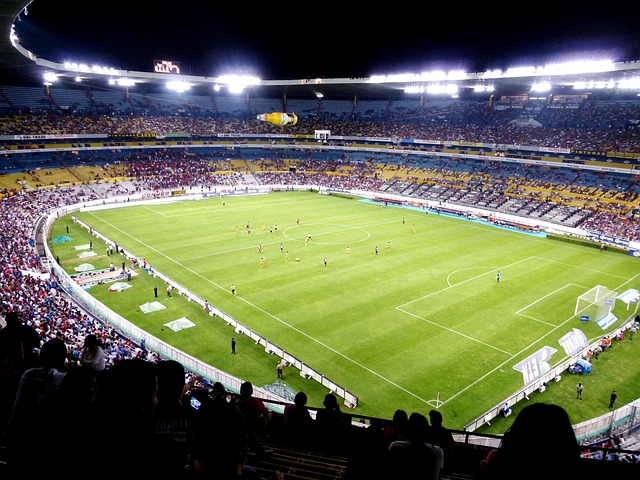
“A Tale of Rivalries and Resilience: Mumbai City FC, Indian Super League, East Bengal FC, and Mumbai FC”
December 20, 2023 Imphal By Banti Phurailatpam:
In the kaleidoscope of Indian football, the narratives of clubs weave a rich tapestry of passion, rivalries, and the undying spirit of the sport. Mumbai, with its bustling energy and diverse culture, stands as a unique backdrop for football clubs that have left an indelible mark on the landscape. In this article, we delve into the stories of Mumbai City FC, Indian Super League, East Bengal FC, and the journey of Mumbai FC, exploring the intersections and divergences that define their presence in the Indian footballing arena.
1. The Rise of Mumbai City FC:
Mumbai City FC, founded in 2014, emerged as a beacon for football enthusiasts in the city. The club’s entry into the Indian Super League (ISL), the premier football league in the country, signaled a new era for football in Mumbai. Owned by a consortium including Bollywood actor Ranbir Kapoor and sports investment company Bimal Parekh, Mumbai City FC aimed not only to compete at the highest level but also to foster a strong football culture in the city.
With a blend of international and Indian talent, Mumbai City FC has been a formidable force in the ISL. The club’s journey has seen highs and lows, but the passionate fanbase, captivating performances, and strategic investments have solidified its presence in the league. The quest for the elusive ISL trophy remains a driving force for Mumbai City FC, reflecting the resilience embedded in the spirit of the city it represents.
2. The Indian Super League:
The Indian Super League (ISL), conceptualized in 2013, aimed to elevate football in India by providing a platform for both emerging and established talents. The league’s inception marked a paradigm shift, introducing a franchise-based model that brought together investors, celebrities, and football enthusiasts under one umbrella.
As a cornerstone of Indian football, the ISL has played a pivotal role in nurturing talent and promoting the sport across the country. The league’s structure, with its blend of domestic and international players, has not only elevated the standard of football but has also created a vibrant footballing ecosystem. The ISL’s partnership with the All India Football Federation (AIFF) has further strengthened its impact, contributing to the development of grassroots football and providing a robust structure for the national team.
3. East Bengal FC: A Legacy Unfolding:
East Bengal FC, one of the oldest and most storied football clubs in India, traces its roots back to 1920. Based in Kolkata, East Bengal has been a powerhouse in Indian football, etching its name in the annals of the sport. The club’s red and gold colors evoke a sense of pride among its passionate supporters, making matches involving East Bengal a spectacle filled with emotion and history.
While East Bengal FC initially competed in the I-League, the club’s entry into the ISL marked a historic moment. The move signaled a transition for a club deeply entrenched in tradition, providing it with the opportunity to participate in a league that has become the focal point of Indian football. East Bengal FC’s journey in the ISL reflects not just a sporting evolution but also a testament to the enduring legacy of one of India’s football giants.
4. Mumbai FC: A Footballing Odyssey:
Founded in 2007, Mumbai FC embarked on a journey to carve its niche in Indian football. The club’s participation in the I-League, the top-tier football league in the country before the inception of the ISL, marked a significant step in Mumbai’s footballing narrative. With a commitment to grassroots development and a vision to make Mumbai a footballing hub, Mumbai FC became a symbol of the sport’s potential in the city.
While Mumbai FC faced its share of challenges, including financial constraints and on-field struggles, the club’s legacy lies in its contributions to the growth of football in Mumbai. The academy and youth development programs fostered by Mumbai FC played a crucial role in nurturing local talent, leaving a lasting impact on the footballing ecosystem of the city.
5. Rivalries and Showdowns:
Football rivalries are the heartbeat of the sport, and in India, the clashes between Mumbai City FC, East Bengal FC, and other prominent clubs have created unforgettable moments. The Mumbai City FC vs. East Bengal FC matchup, in particular, carries the weight of history and regional pride. These encounters transcend the boundaries of the field, becoming cultural events that unite fans in their shared passion for the beautiful game.
The emergence of the Kolkata-Mumbai rivalry in Indian football adds another layer to the narrative. The cities, each with its unique cultural identity, bring a fervor to the clashes that extends beyond the realms of sport. As Mumbai City FC seeks supremacy in the ISL and East Bengal FC strives to uphold its legacy, the encounters between these clubs become pivotal chapters in the ongoing saga of Indian football.
6. Football and Cultural Impact:
Beyond the wins and losses, football clubs become cultural entities, influencing the communities they represent. Mumbai City FC, East Bengal FC, and Mumbai FC have not only contributed to the sporting landscape but have also become symbols of identity and pride for their respective fanbases.
Football, with its ability to unite people from diverse backgrounds, serves as a cultural melting pot.
“A Tale of Rivalries and Resilience: Mumbai City FC, Indian Super League, East Bengal FC, and Mumbai FC” Read More






















